Wonderful Place : Raja Ampat , THE WORLD'S MOST BEAUTIFUL ISLANDS
THE FISH around here know how special they are. They shimmer and glow and sparkle like stars in their own biopic, performing in the spotlight of crepuscular sunrays. There's the arresting electric-blue giti damselfish with its flash yellow tail, the alluring doe-eyed, deep-reef cardinalfish, and the jamal's dottyback with aqua-rimmed eyes as startling as Daniel Craig's. Mandarinfish go about their flirty courtship dance at dusk - part tango, part samba - rising up, cheek-to-cheek, locked in a triumphant embrace of pectoral fins. And there's the shy Denise's pygmy seahorse hiding among gorgonian coral, a specimen so endearing you might just quit your job to study marine biology.

The Indonesian archipelago of Raja Ampat lies in the Coral Triangle, which stretches from The Philippines to Timor to Papua New Guinea, known as the most biodiverse marine habitat on earth. 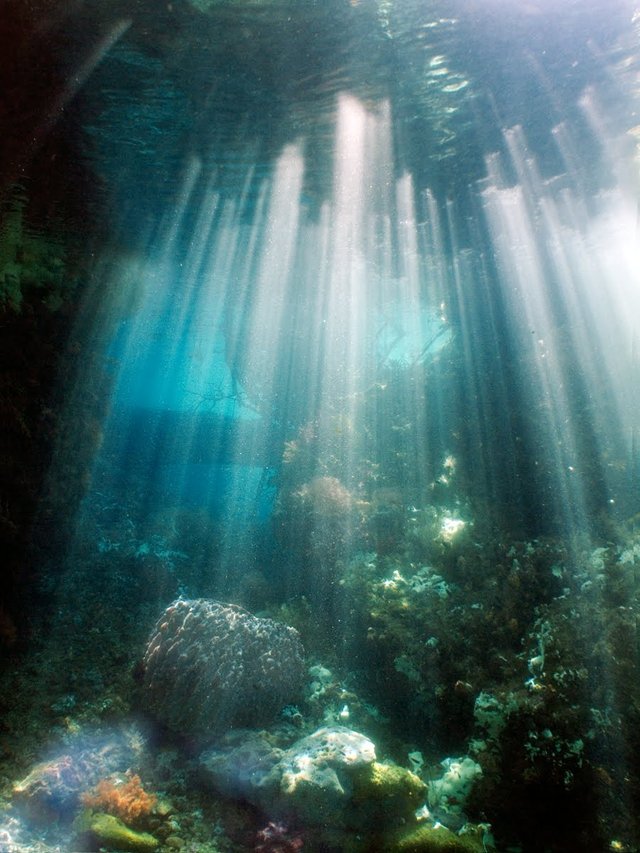
There are many species here you won't find anywhere else. It has three-quarters of the world's coral varieties, 10 times that of the Caribbean. The high-definition visibility means that in one glance, without having to swim a stroke, you will see a multitude of corals resembling Murano vases or bunches of baby corn, marbled plumbing fittings, peanut brittle, cobwebs and an oversized cabbage patch.
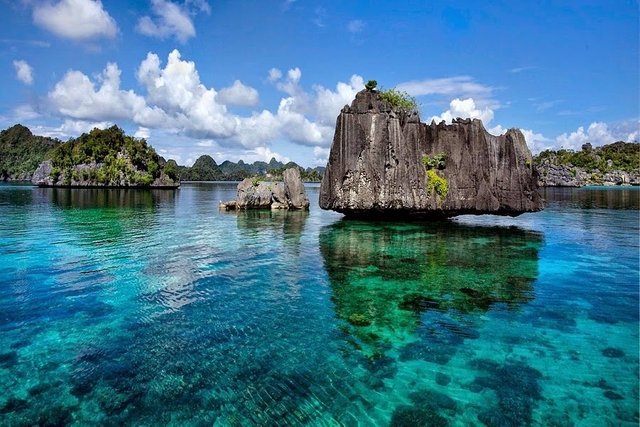
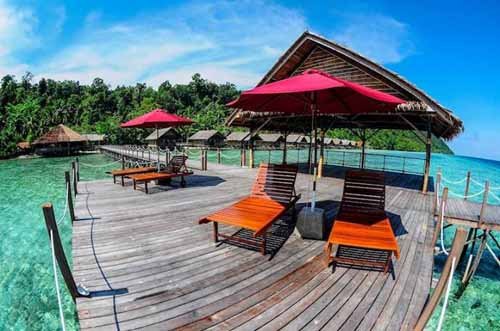
Some say the scientist Alfred Russel Wallace, whose studies focused on these islands, should be considered Charles Darwin's equal for his work on the theory of evolution by natural selection. 'Situated upon the Equator, and bathed by the tepid water of the great tropical oceans, this region… teems with natural productions which are elsewhere unknown,' he wrote in 1869.
Raja Ampat is comprised of four big islands and hundreds of dots and specks off the fragmented western corner of New Guinea, the world's second largest island. (Named in the 16th century by a Spaniard who thought the people here resembled those in Guinea, West Africa.) The eastern half of the island is given over to the independent state of Papua New Guinea; the western half belongs to Indonesia, evidently reluctantly, and is known as Papua. Locals are culturally Melanesian - more like Fijians than Javanese - and they're keen on independence. The morning I arrive in the province had been preceded by overnight political demonstrations. 'Drunks,' said one man, playing it down. 'There's a revolution going on,' said another, playing it up. The streets were crawling with Indonesian soldiers and military police. If you want edgy, this is it.
Yet this part of the world also serves as a reminder that there are still relatively unexplored places, serene and pristine. It has stayed this way because of the simple fact that for many years there was nowhere for travellers to stay. Committed divers, often the most pioneering of explorers, travelled around the region on liveaboard boats. But now homestays are opening up and word is beginning to spread.
THIS IS HANDS DOWN THE BEST DIVING I'VE EVER DONE
MOST VISITORS GET TO Raja Ampat by way of Sorong, a city on the far west coast of Papua, where there is an airport, army barracks and a karaoke bar called Happy Puppy. Life for many here revolves around the nation's three main sources of revenue: fishing, mining and logging, which also happen to be destroying the country's natural habitats. The port is busier than it should be for a far-flung provincial town. The gigantic arms of cranes unload shipping containers. Oil tankers fill up at oversized vats on the water's edge. Down the coast is the largest gold mine and the third largest copper mine on the planet. They say that if Papua was an independent state, it would have one of the world's richest incomes per capita.
But Sorong does have a go-slow mode too. Kids walk to school across the airport runway. A column of smoke wisps out from between hillside homes where the call to prayer punctures the day. At night, 10-foot- high crucifixes light up in flashing neon.
Less than two hours from here by boat is a clutch of hotels and homestays, most of which have opened in the last few years. At Papua Paradise there are 16 overwater villas and two incredible house reefs, home to the fantastically named wobbegong sharks and flamboyant cuttlefish. I sit on my stilted deck and watch a family of radjah shelducks swim past, delivering intermittent quacks. A foot-long needlefish flies out of the water, avoiding a predator. A manta ray somersaults, cleaning its back, and the ripples of the splash extend to the shore. There is even a near-resident dugong (I had always thought they were imaginary beings, like unicorns).
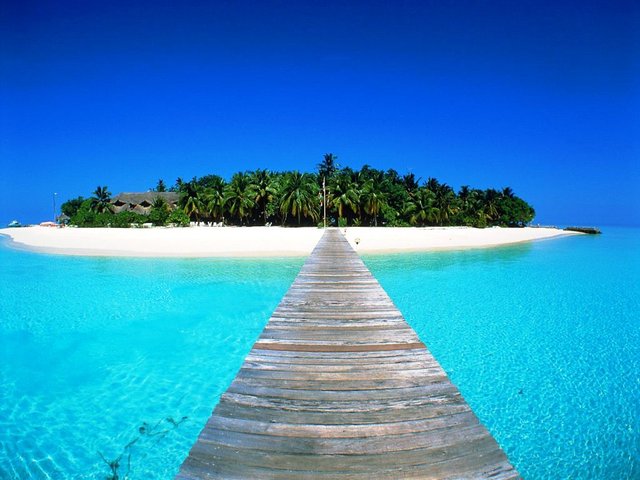
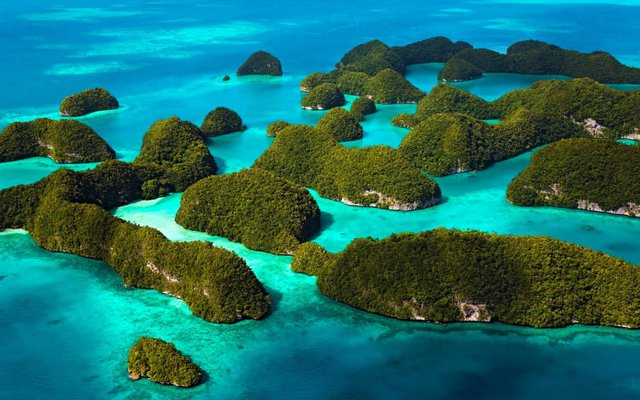
Early mornings here are a cacophony of chuffing hornbills, crass squawks of black cockatoos and cackles of sea eagles. To me the place seems otherworldly - near mythical - and many people are aware of the need to future-proof their miraculous environment. But plans can get muddled. At Papua Paradise - currently all low-impact wood and thatch and bamboo - there are rumours of increasing the capacity of the hotel. I hear fellow guests muttering about the projected changes; that they won't be coming back.
TO DISCOVER WHY people really come here it is necessary to travel to the far reaches of southern Raja Ampat, to the island of Misool. I arrive by overnight ferry from Sorong, a crowded, colourful vessel stuffed to the rafters with freight and large families (they sure know how to have babies here and, rather cleverly, babies who don't seem to cry). I spend most of the night on the bridge with the captain who chain-smokes and tells me in broken English that he hasn't had a ferry sink on him yet.
We motor between outcrops of towering rainforest, like someone has torn up the Amazon basin and thrown fragments into the Ceram Sea. The land rises up steep and high: sugarloaves of karstic limestone with streaks and striations and stalactites. Wave erosion has undercut the islands so they look as if they're levitating above the water. On the shore it's all cliffs and caves and mangroves, until suddenly, around a bay, there's a secret slip of a beach without a footprint in the sand. Flocks of birds rise up from the treetops in a series of whoops, only to settle again, gloating with satisfaction at their performance.
At dawn the ferry docks near one of the world's biggest pearl farms where guests are collected for the final ride to Misool Eco Resort, a blow-you-away beautiful hotel constructed along strict eco-friendly lines. It puts some of the smartest spots in the Maldives to shame with its 15 overwater villas and cottages set around a scalloped bay built from driftwood and fallen trees. Calico drapes billow between hammocks slung beneath pitched thatched roofs, with wooden stairs leading down to the sea, and views of nearby islands so verdant, so vital, you feel they might rise up like Godzilla.
The hotel is the creation of Marit and Andrew Miners (she's Swedish-American, he's English) who, after seeing how the region's marine environment was being destroyed - by dynamite fishing, by nets, by long-line fishing, by chopping up turtles as bait for sharks - 'wanted to do more than talk about saving the world'.
'I was coming up from dives and there would be 30 fishing boats, all shark-finning,' Andrew says of the time when he was working on liveaboards in the region. 'I even had a bomb thrown on top of my group during one dive. And yet this was hands down the best diving I'd ever done. It's the Amazon of the world's reefs.'
The Miners secured the lease on a 425-square-kilometre patch of ocean and began to solicit local support for the creation of a no-take zone where all fishing would be banned. They hired a patrol team, set up ranger posts and began building a hotel on the site of an old shark-finning camp. When it came to opening, their construction staff changed clothes and became waiters. 'They had never even stepped inside a restaurant,' Marit says, 'and the housekeeping staff had never seen a Western bathroom.'
It seems those-in-the-know had been longing for somewhere like this in Raja Ampat: the divers came first, then intrepid couples, followed by families. The hotel is expanding, yes, but wisely, with four new villas and a spa. In Sorong, a café/shop is opening to help fund conservation work, and there are plans for a second restaurant, an aquaponics project and goat farm. But the Miners' overriding accomplishment is the impressive recovery of the environment. 'This is the only place in the world where marine biomass is increasing this rapidly,' says Calvin Beale, the hotel's marine biologist and dive instructor. 'The amount of fish on our house reef has doubled in six years.'
Impressed with the hotel's success, the Marits were approached by local villagers who had seen the spillover effect of the no-take zone, which had increased the number of fish outside the protected area, and witnessed how foreign fishing boats were staying away. They also wanted jobs at the hotel and to benefit from its community projects. The Miners paid for the lease on a second section of ocean and the marine-protection zone doubled in size. 'We are now seeing shark-finning fishermen become rangers,' says Marit.
With the support of NGOs working in the region such as Conservation International, the Miners also petitioned local government for support; it has since made Raja Ampat a shark and manta ray sanctuary. This inspired a national declaration in 2014 to ban all fishing of manta rays, if not yet sharks, across Indonesia. 'You're guaranteed to see manta here,' Beale tells me. 'There are not many places on earth you can say that.'
For much of our world, there is an urgency to visit now before it's too late. But here at Misool, you could plan a trip with your unborn grandchildren. This is one of those rare places where - enchantingly, inspiringly - it's set to get better and better.
On day trips to neighbouring islands it is rare to see another boat, let alone another traveller. I swim through a cave as big as a cathedral - with a Pantheon-like shaft of light - and exit by duck-diving under a rock into an aquamarine lagoon. I gaze upon 4,000-year-old petroglyphs of stencilled fish and handprints (missing a finger, cut off to mark the premature death of a loved one, a custom still practised today). I snorkel in a saltwater lake among hundreds of pulsating golden jellyfish; mesmerising, hypnotising, like floating in a lava lamp.
Best of all, I leap off my deck and into the sea several times a day to snorkel the house reef and fool myself into believing some of the fish have become friends: the cloud of flirtatious black-and-white damsels; the pair of loved-up coral rabbitfish; the clownfish hiding in the tentacles of an anemone. Now I know what to choose for my Desert Island Discs luxury: give me a mask and snorkel here and I'll be happy forever.
Keep up the great work @grimjo33
Upvoted
thanks @chonesta
Hi! This post has a Flesch-Kincaid grade level of 9.9 and reading ease of 59%. This puts the writing level on par with Michael Crichton and Mitt Romney.